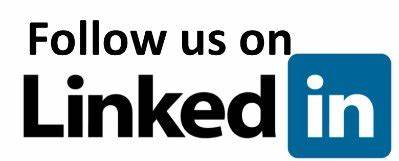
May 15, 2020
How to Make the Most of Your Auto Leads in the Post-Pandemic Market
As we’ve discussed before, digital analytics have changed the traditional balance of quality versus quantity in auto sales leads. Automating the auto lead generation and analysis process means dealers can focus solely on the best car sales leads without wasting time on prospects who aren’t ready to buy.
However, digitizing car sales lead generation has never replaced the need for skilled marketing and salespeople in an auto dealership. This is truer today than ever before but making the most of those auto leads right now requires that marketing and sales teams understand and effectively engage their marketplace, customers and the economy.
In this blog post, we’ll cover:
- Understanding what the COVID-19 crisis has done to the broader economy
- Adapting to the realities of your local marketplace
- Personalizing your marketing and sales for each individual prospect
Understand and Adapt to the Current Economy
A new car sales lead doesn’t live in a vacuum. It’s part of a broader economy, and making the most of your car sale leads requires your marketing and sales teams to be engaged and thoughtful in how they factor broader economic influences into how they work their car sales leads and interact with prospects.
Most importantly, the U.S. economy just had its single biggest one-month increase in unemployment since the federal government started tracking those figures after World War II, jumping from 4.4% to 14.7% in April. A total of 23.1 million Americans are out of work, and a historic low of just 51.3% of Americans of all ages are working right now.
The bright side of this massive economic downtown is almost all those job losses are categorized as temporary. The U.S. Bureau of Labor Statistics expects 18.1 million workers to get their jobs back at some point, compared to only two million who have permanently lost their positions due to the crisis.
The obvious impact of this current reality on car sales lead generation and management is that individuals or households who would have been high-quality leads two months ago may suddenly not be today. But they may revert to one of your best auto leads in just a few short months.
This is a driving factor for why consumer research is finding that while many consumers are planning on delaying a new or pre-owned car purchase, few are cancelling their plans altogether. Your marketing and sales efforts should factor this in and combine a cadence that is sensitive to consumer concerns with offers designed to alleviate uncertainty and entice action sooner rather than later.
Know Your Market
There’s always been a tremendous amount of diversity in dealers’ businesses across the country, but the variation in infection rates and different policy responses to COVID-19 have created even more differences between what challenges dealers face and what options they have to address those challenges.
For instance, a dealer in urban Michigan, with more than 45,000 confirmed cases and an unemployment rate over 21%, will have a different marketplace than one in rural Montana, a state with fewer than 500 reported cases and where 20 of the state’s 56 counties have yet to report a diagnosed infection. Those two dealers cannot and should not interact the same with a new car sales lead.
In addition to practical factors such as limitations on dealer operations and higher unemployment rates in states with stronger stay-at-home orders, auto dealers also need to recognize the different cultural impact that COVID-19 has had and ensure their marketing and sales engagement is respectful of regional cultural variations. For instance, consumers in hard-hit communities where it is common to have lost friends or family to the disease are going to be understandably more sensitive to messaging that implies the pandemic has created a great opportunity for them to save money.
Personalize Your Marketing, Nurture Your Leads
Your marketing and sales efforts cannot presume that what was true about your dealership’s prospects two months ago is still true today – or that their current challenges are disqualifying in the long term. Even households that get back to work are going to be impacted by three to six months of unemployment or underemployment.
As an example, a new car sales lead may suddenly become a pre-owned sales lead. With economic uncertainty ahead, the glut of de-fleeted used vehicles on the market and the disruption to new vehicle manufacturing by OEMs, many consumers may choose to purchase pre-owned rather than new. This will require your car dealership to seamlessly transition those prospects between new and used sales teams to maintain a consistent dealership customer experience.
Another way to personalize your sales cycle – and not waste resources on car sales leads that have suddenly become ice-cold – is to encourage your sales teams to learn more about where their prospects fit into the broader recovery.
In general, states that have limited economic activity for public health reasons are planning on reopening on an industry-by-industry basis, which means workers in some industries will generally be waiting longer than others to go back to work. A new car sales lead employed in the tourism industry, at an airline or at a concert venue is more likely to postpone or downgrade their purchase plans than someone in road construction, agriculture or another essential business.
In the coming weeks, the quantity of quality auto sales leads may potentially decrease, which means it’s more incumbent than ever for auto dealers to make the most out of every valuable sales lead. This requires taking a data-driven approach at lead generation and qualification and continuing to use those customer insights to nurture leads and deliver a deeply personalized customer experience.
If you’re struggling with adapting your lead generation process to the current environment, please contact us. We’re here to help.
Explore additional resources related to auto sales during and after COVID-19.

